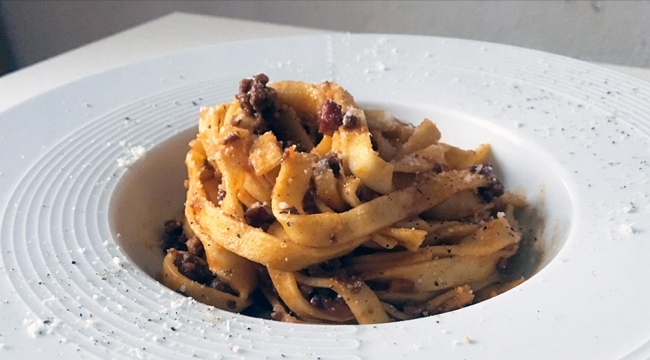
A classic bolognese sauce — or ragu, if you will — is the cornerstone of any great Italian cooking repertoire. Yet, as with all classics, the foundational recipe for this one varies greatly. Part of that is the Italian-American influence on the original dish from Emilia-Romagna. Tomato sauces are added, the milk is often dropped, and debates rage over whether or not garlic is needed (Italian-Americans put garlic in everything, much to the chagrin of Italians in the old country).
I tend to lean heavily towards the authentic recipes from Bologna with my ragu. I know, shocking. Thing is, I’ve spent a lot of time in Bologna. It’s one of my top three favorite cities in the world — depending on my mood, it may even be my most favorite. I spend a lot of time there and I hang out with chefs and talk about food. That, inevitably, means we talk their ragu. I listen. I learn.
So, this recipe is a reflection of that. The dish below errs towards the Italian way but is still my take. It’s not exactly what you’d find from the “official” Bologna culinary elites, but it’s really freakin’ close. Let’s dive in and make one of the most satisfying meals on the planet.
I: Ingredients
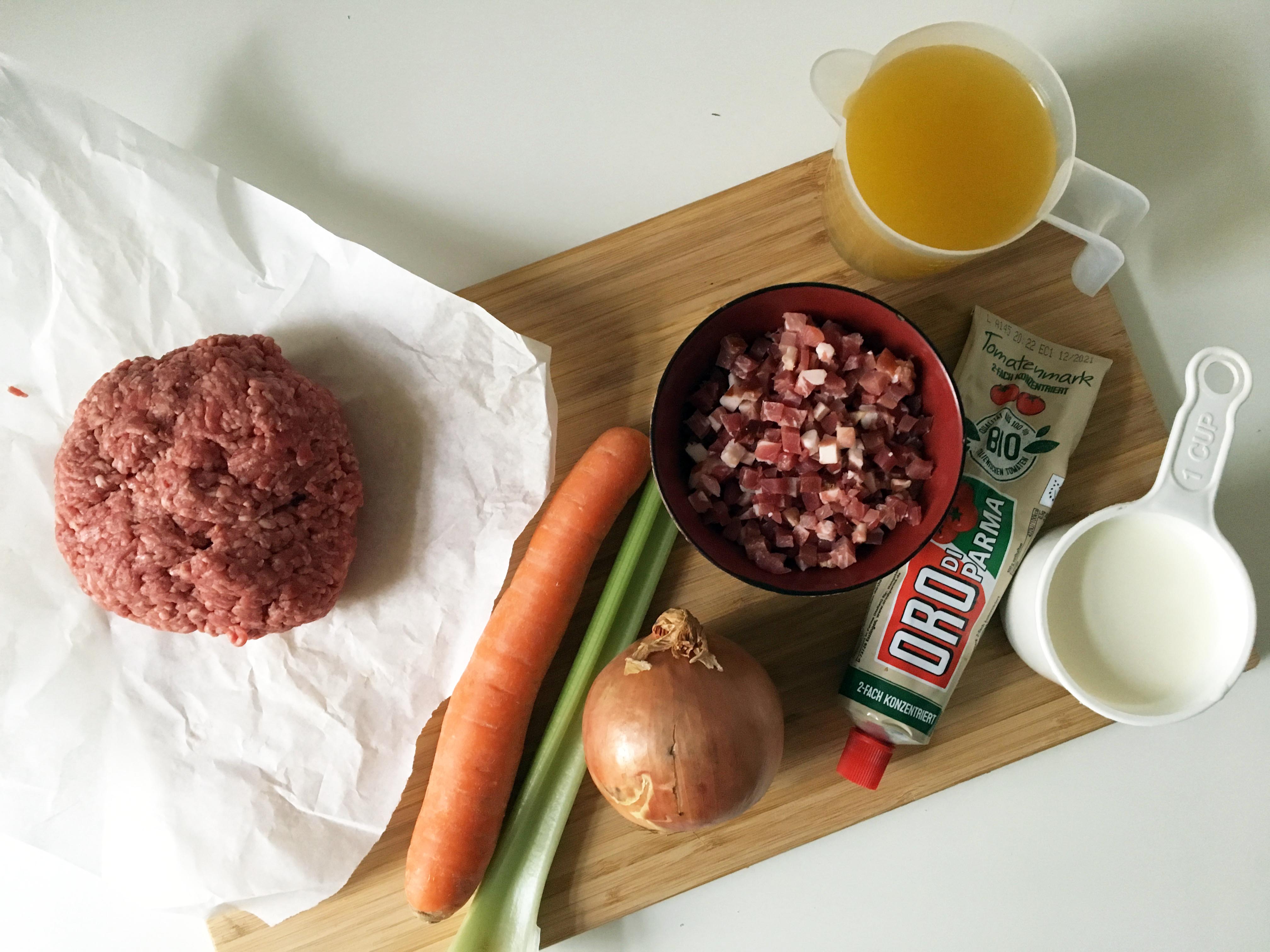
Buy fresh. Buy local. Go to butcher shops. Go to farmer’s markets when you can. This is Italian cookery. Fresh is crucial.
You’re going to need a fair bit for this recipe. The base is pancetta, onion, carrot, celery, ground beef, red wine, broth, tomato paste, milk, salt, and pepper.
Each of those ingredients should be well-sourced. For the milk, you’ll need the full-fat, 3.5 percent stuff. Do not skimp here. I use a classic vegetable broth but you can use a mild beef stock if you like. The tomato paste needs to be the good stuff that’s extra thick. I tend to hit up the butcher and have them grind me a skirt or shoulder at an 85/15 lean/fat split. Sometimes, I’ll do 50/50 veal/beef. But, in the end, the taste isn’t different enough to warrant the extra cash.
As for the pancetta, try and actually get pancetta. Bacon is not a good substitute here at all. You need a cured pork belly and bacon is smoked with added sugars that you don’t want. Pancetta is a subtle, fatty meat that’s crucial to starting this dish. Don’t skimp.
Lastly, pull a nice Italian red wine. If you can find a bottle from Emilia-Romagna, great. If you can’t, it’s all good. My rule of thumb is that if I’d like to drink the stuff, it’ll be just fine to cook with.
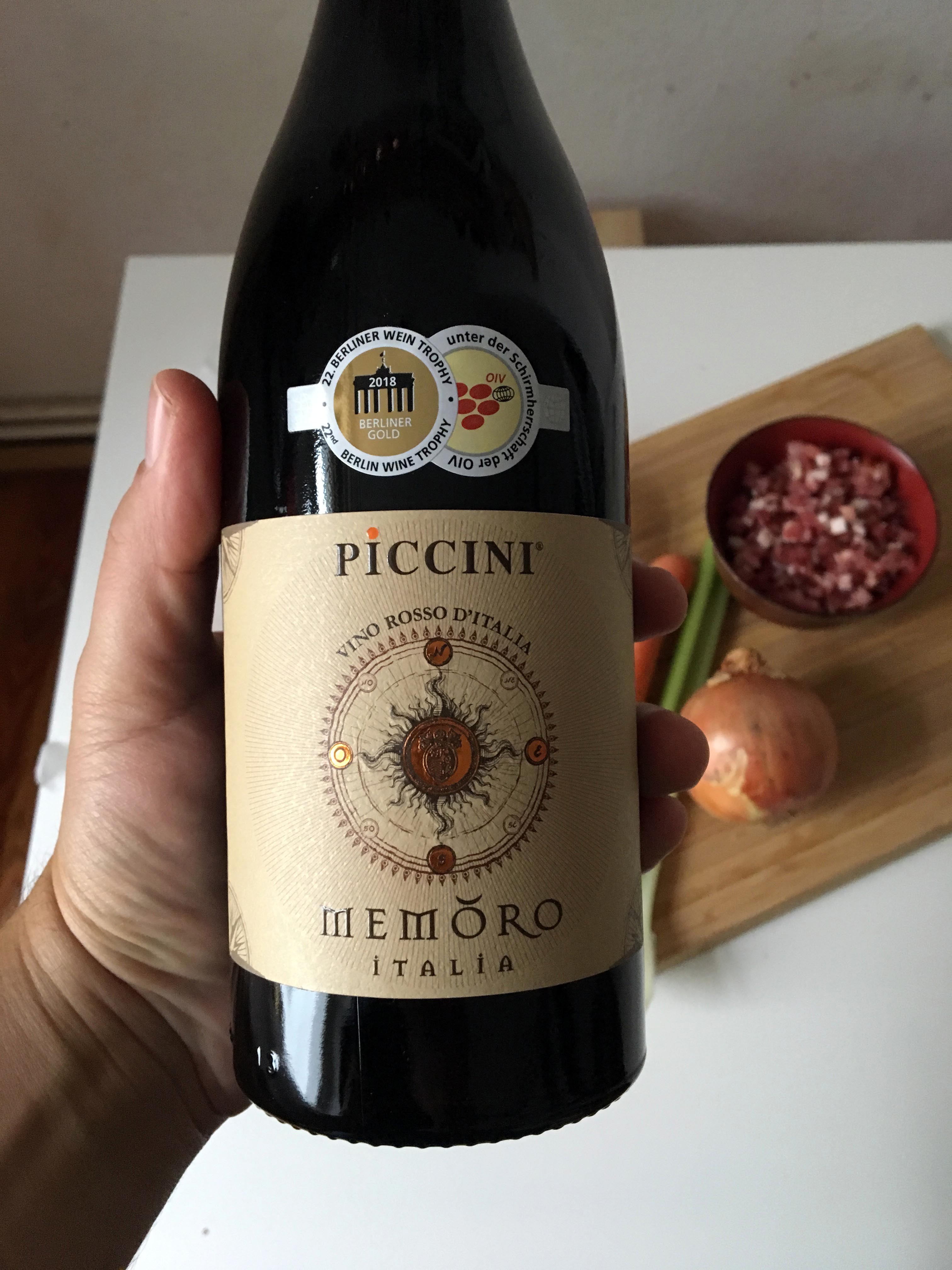
II: Prep
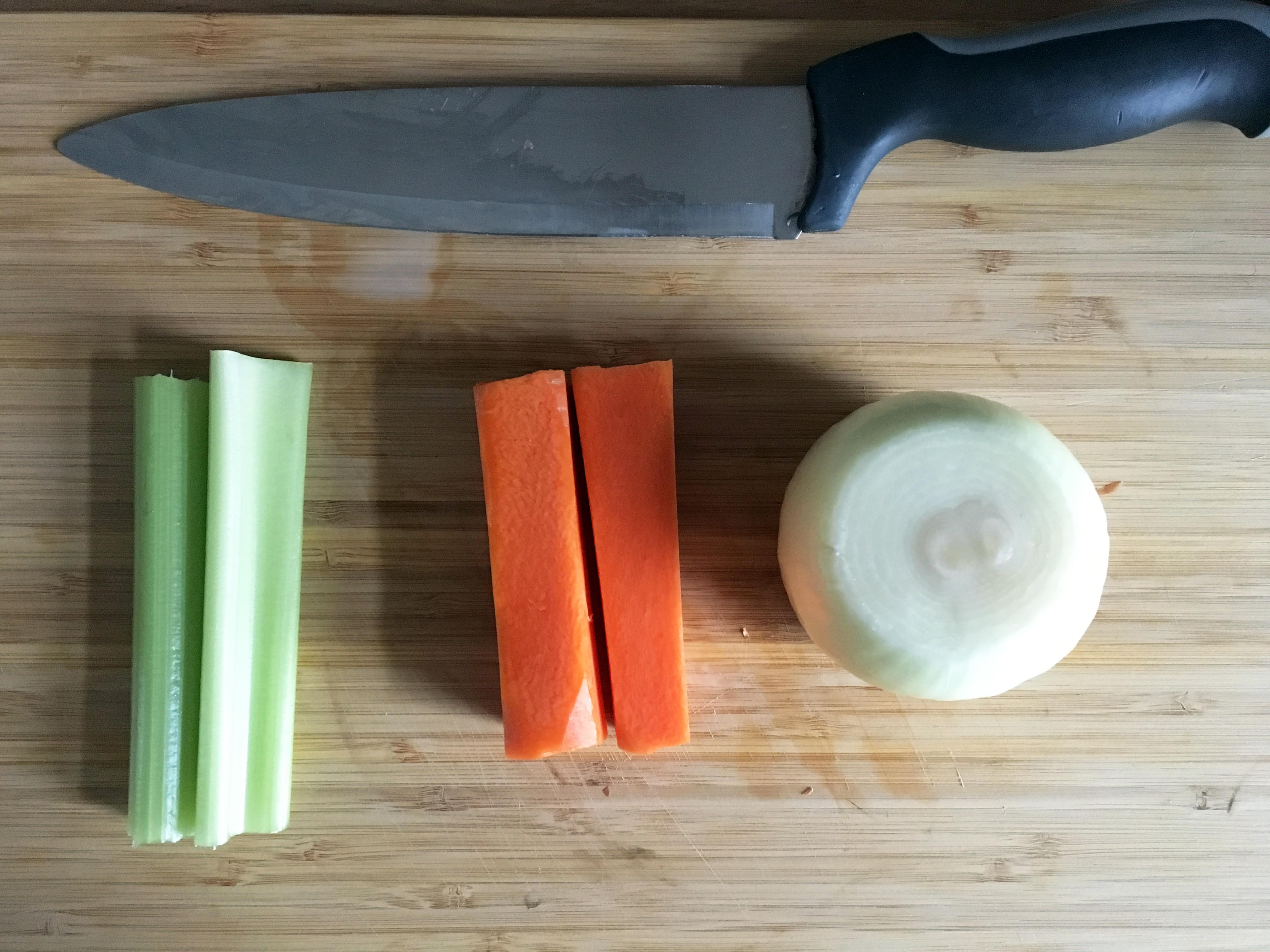
The prep is a little higher-level here. In fact, making a soffritto for a Bolognese is a great place to practice your knife skills. A soffritto is a vegetable base. — generally onion, celery, and carrot. Sometimes fresh fennel or garlic are thrown in for various reasons. With a bolognese, it’s the basic three.
You need a fine mince on all three. This is time-consuming. You’ll need to julienne the carrot and celery and then mince the tiny sticks you made. To help with the carrot, I cut it in half and then square it off, making it easier to julienne. The onion takes a bit more effort. I do a classic dice and them rock my knife across the onion until it’s finely minced.
I do the same with the pancetta. I also warm up my vegetable broth and make sure that the beef is room temperature. We’re ready to cook.
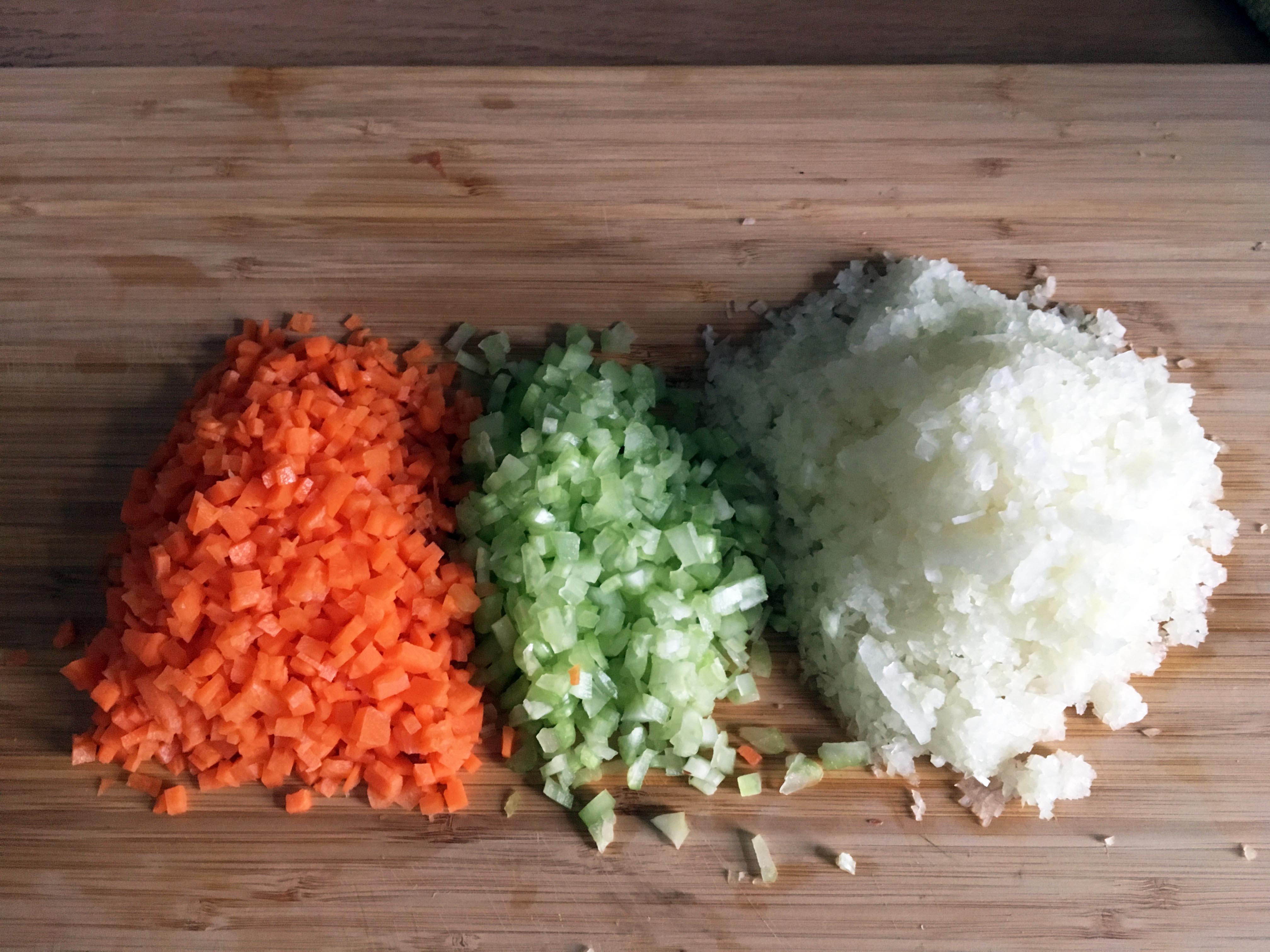
III. Cook
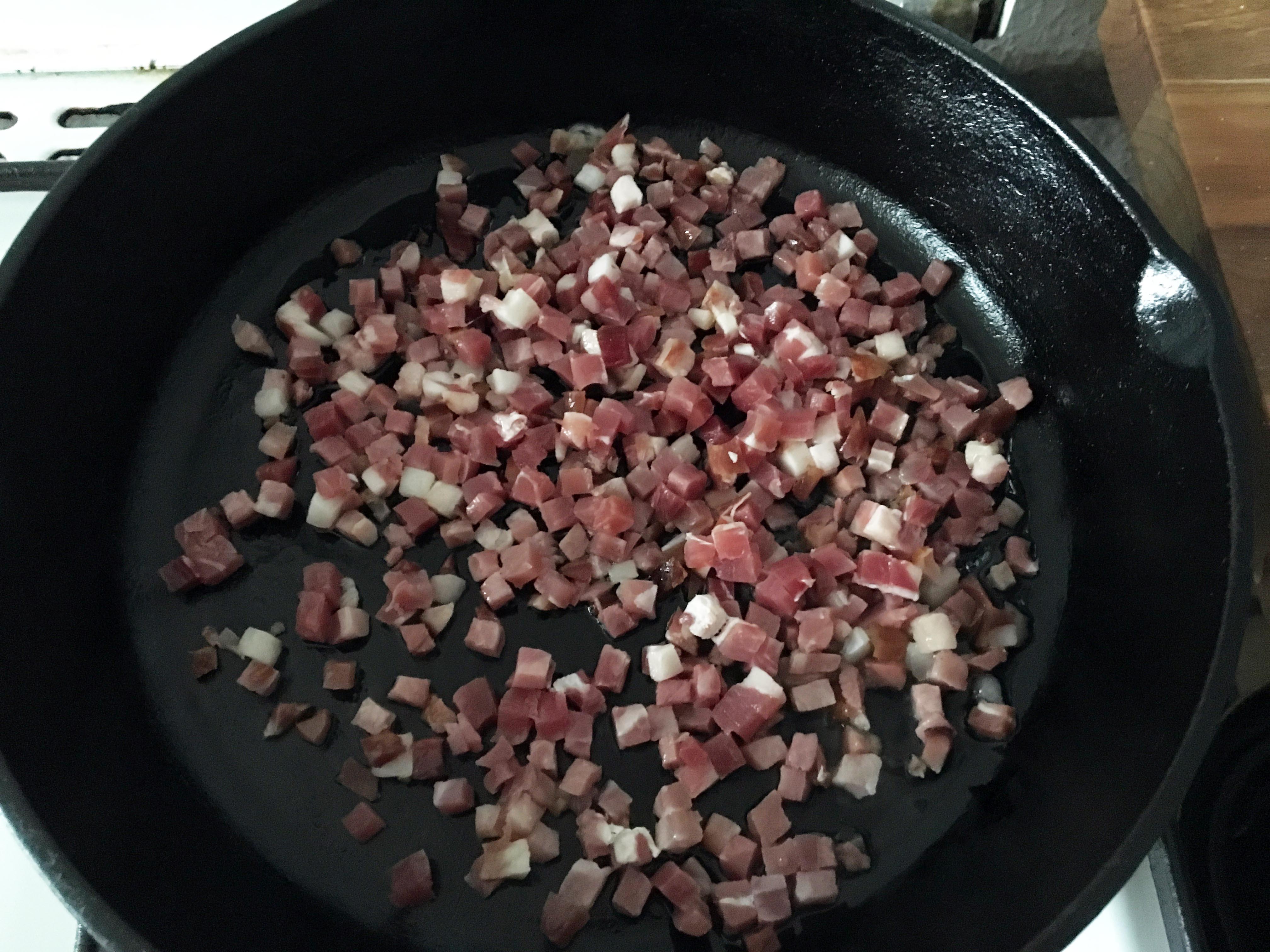
You’ll need a heavy-bottomed pot here. If you don’t have a Le Creuset or something similar, you can totally use a heavy skillet. You’re going to be cooking for a while, so you need heft.
Turn your heat on medium high, add a good glug of olive oil into the pan and the pancetta while it’s still cold. Let the pan and pancetta heat up together. This will help draw out the fats for cooking.
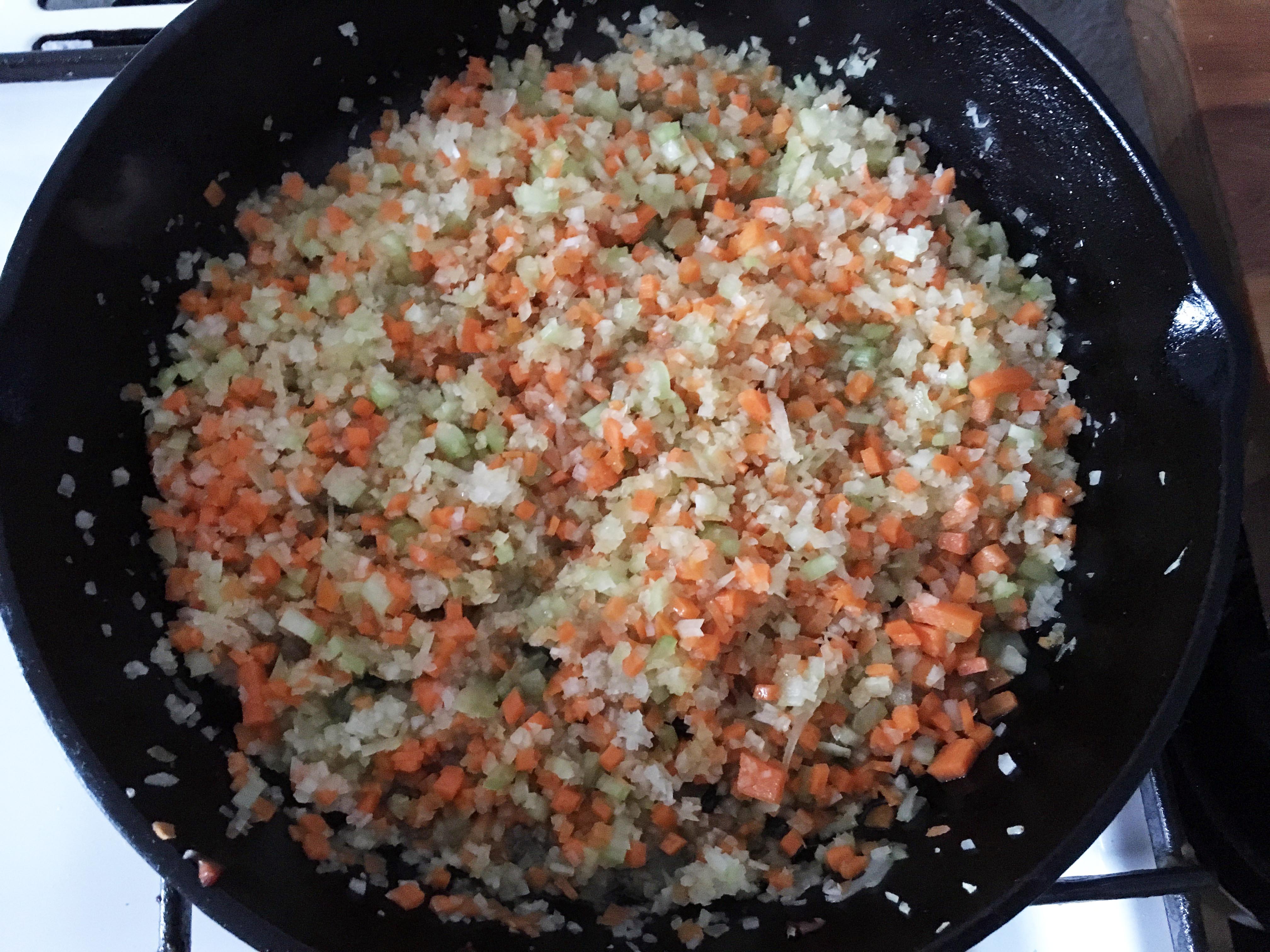
Once the pancetta has started to brown, set it aside, lower your heat to medium, and add your soffritto ingredients. I add a dash or two of the broth here to help bring up the pancetta fond from the bottom of the pan to flavor the veg. You want to let that cook until the onion is completely transparent. At least five minutes.
*There are internet savvy grandmothers in Bologna who are going to kill us for the five-minutes comment. The tradition there is often to do the soffritto and pancetta low and slow for hours. It’s tough to say if it makes a notable difference. – ed
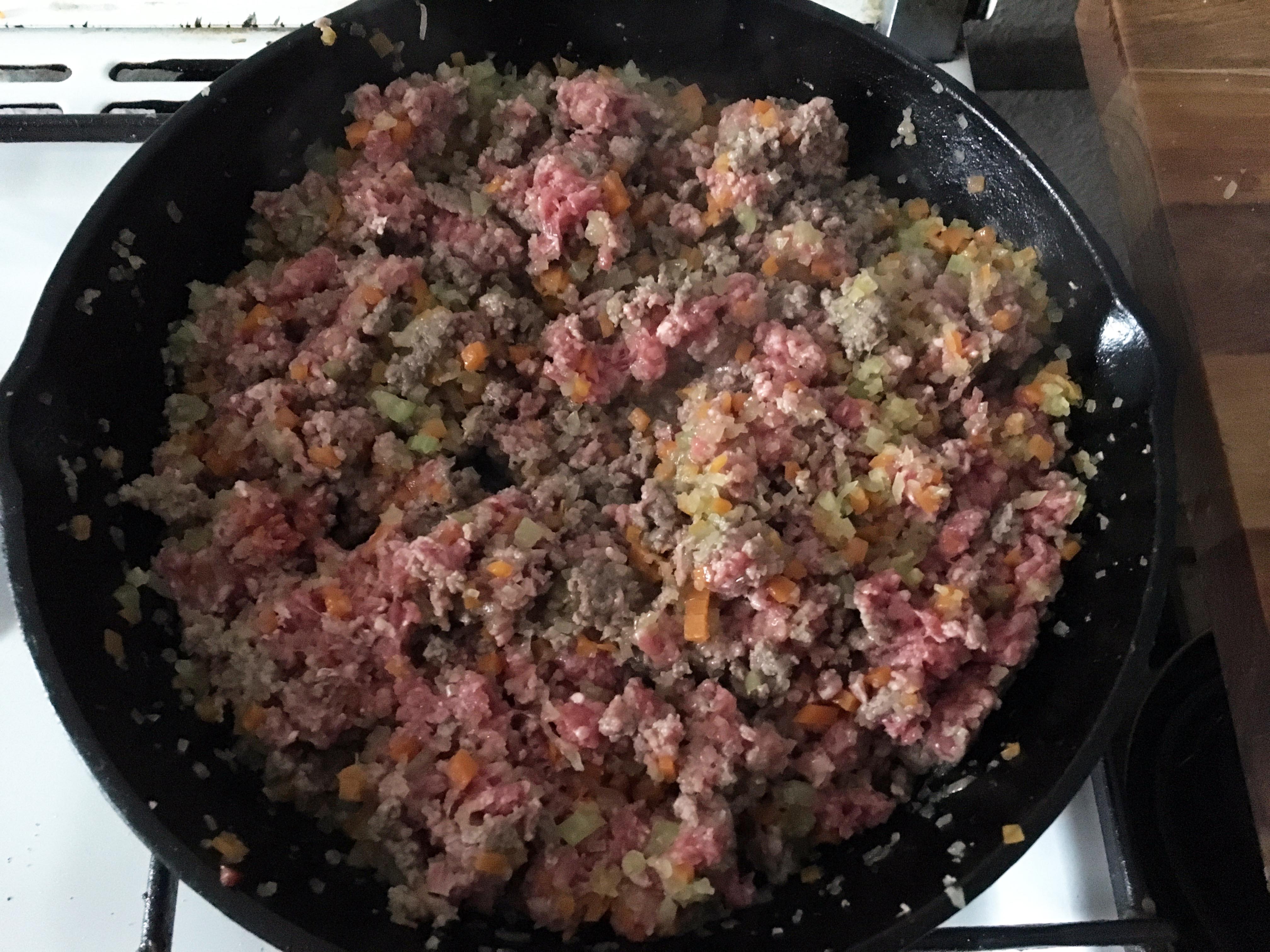
Next, add in the beef. I like to take off pinches between my fingers and drop them in the pan. I then generously salt and pepper the meat and go to work with a wooden spoon. You want to completely break up the ground meat as it cooks into as small pieces as possible. You just have to work it here.
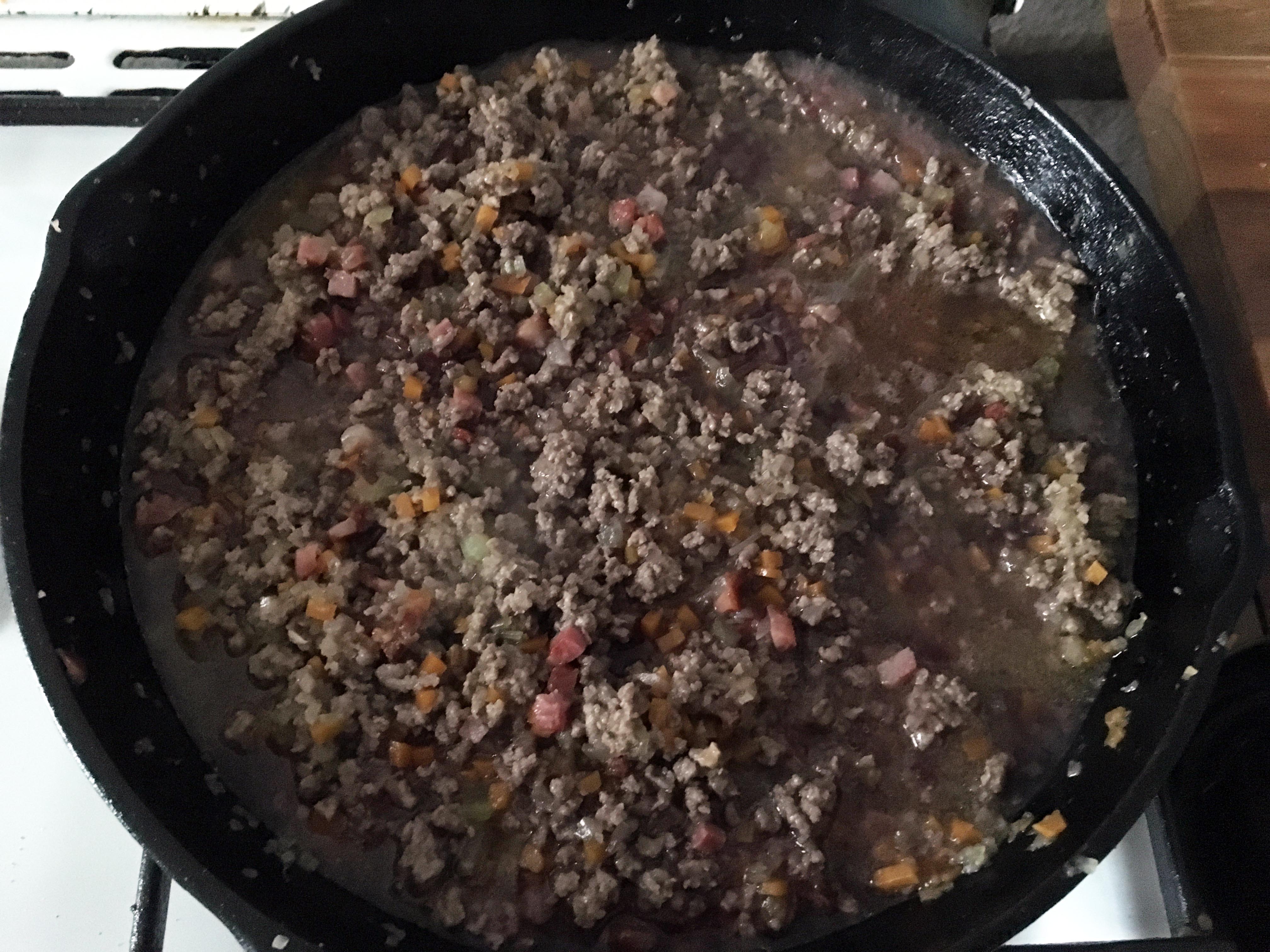
As soon as the meat is browned, add back in the pancetta and one cup of wine. You’re going to braise the meat in the wine here. This adds an all-important deep flavor to the base. So bring it up to a simmer and allow the liquid to completely cook off. It’s important to listen during this step. You’ll hear the meat simmering for a while. When you start to hear it sizzle, or fry, it’s ready for the next step.
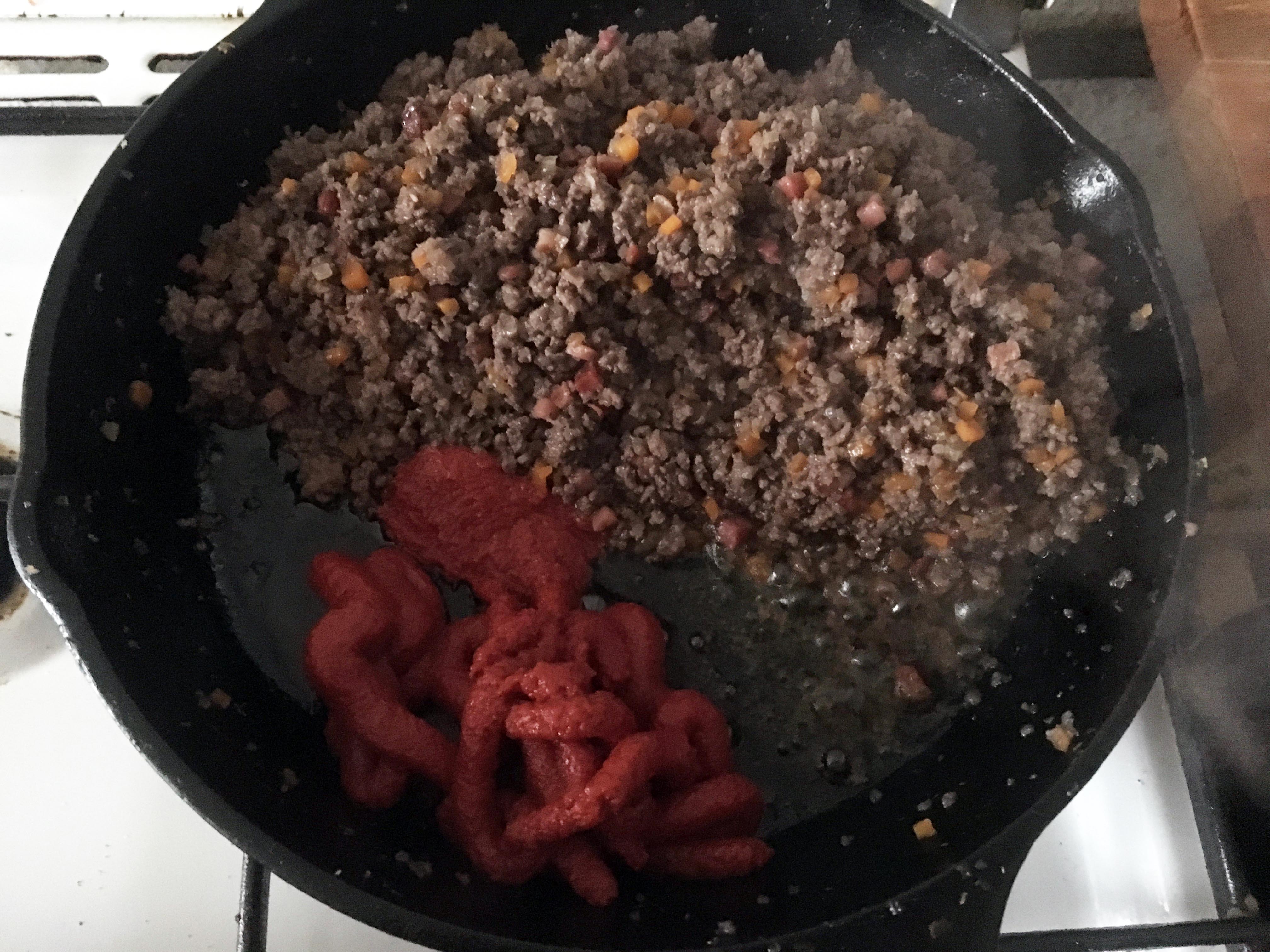
I make a small area that exposes the bottom of the skillet, then I add in the tomato paste in that space. You want to shock the paste before you mix it into the meat. This takes away some of the tinniness of the paste and smooths it out a bit. Generally, I just move the paste around the bottom of the pan for a minute with the wooden spoon and then mix it in.
Next, I add one cup of vegetable broth and mix the sauce thoroughly. I lower the heat to my lowest possible setting and put on a lid. Let this simmer as low and slow as you can — think, one or two bubbles simmering every ten seconds or so over two-ish hours.
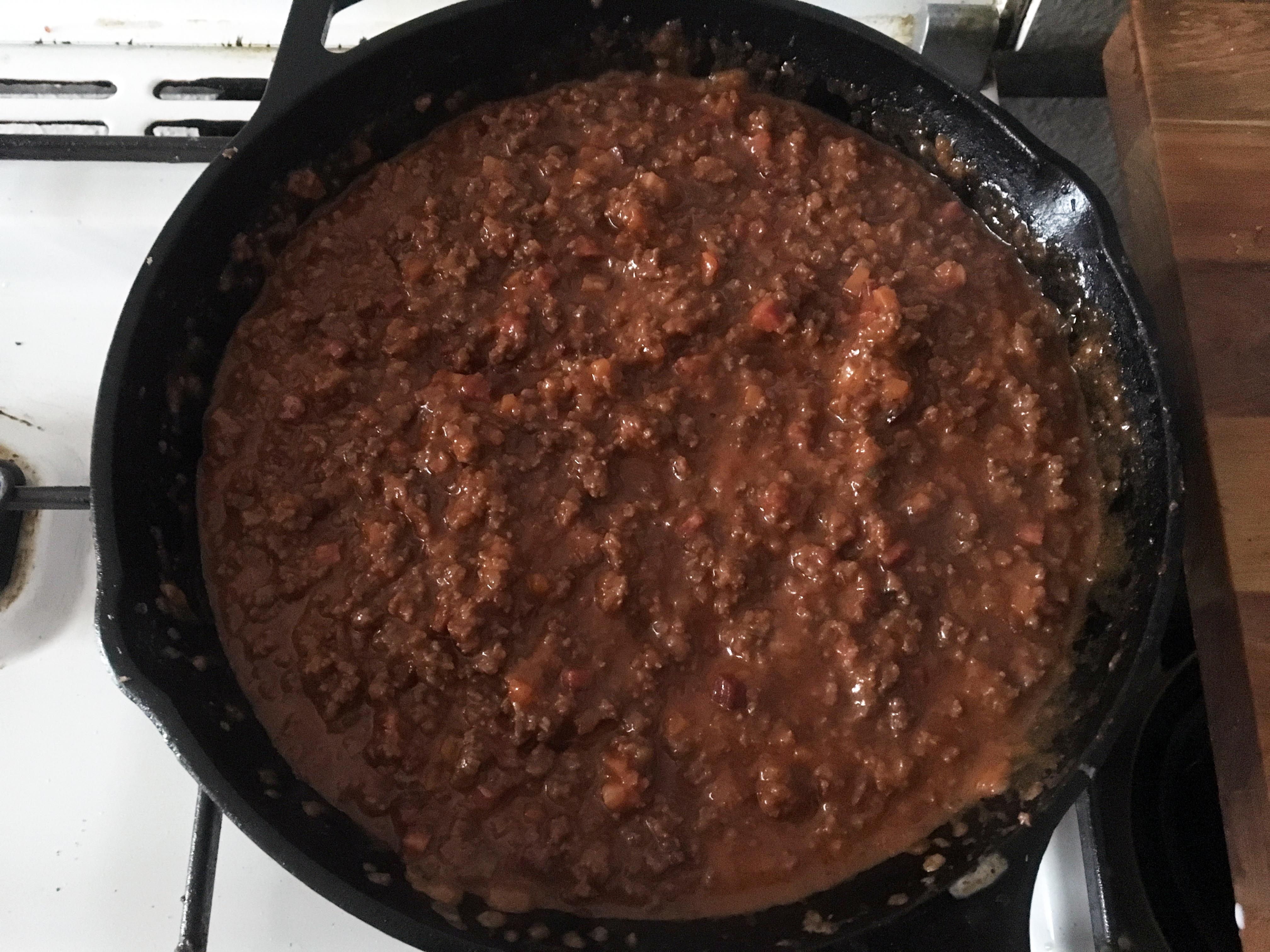
I check on the ragu periodically, maybe every 20 minutes, to give it a stir and make sure it’s still barely bubbling. After about 90 minutes of simmering, I add in one cup of high-fat milk. This takes the edge off the tomato and smooths everything into a lush, meaty sauce. I let the bolognese simmer for about another 30 minutes to emulsify everything and then it’s done.
III. Serve
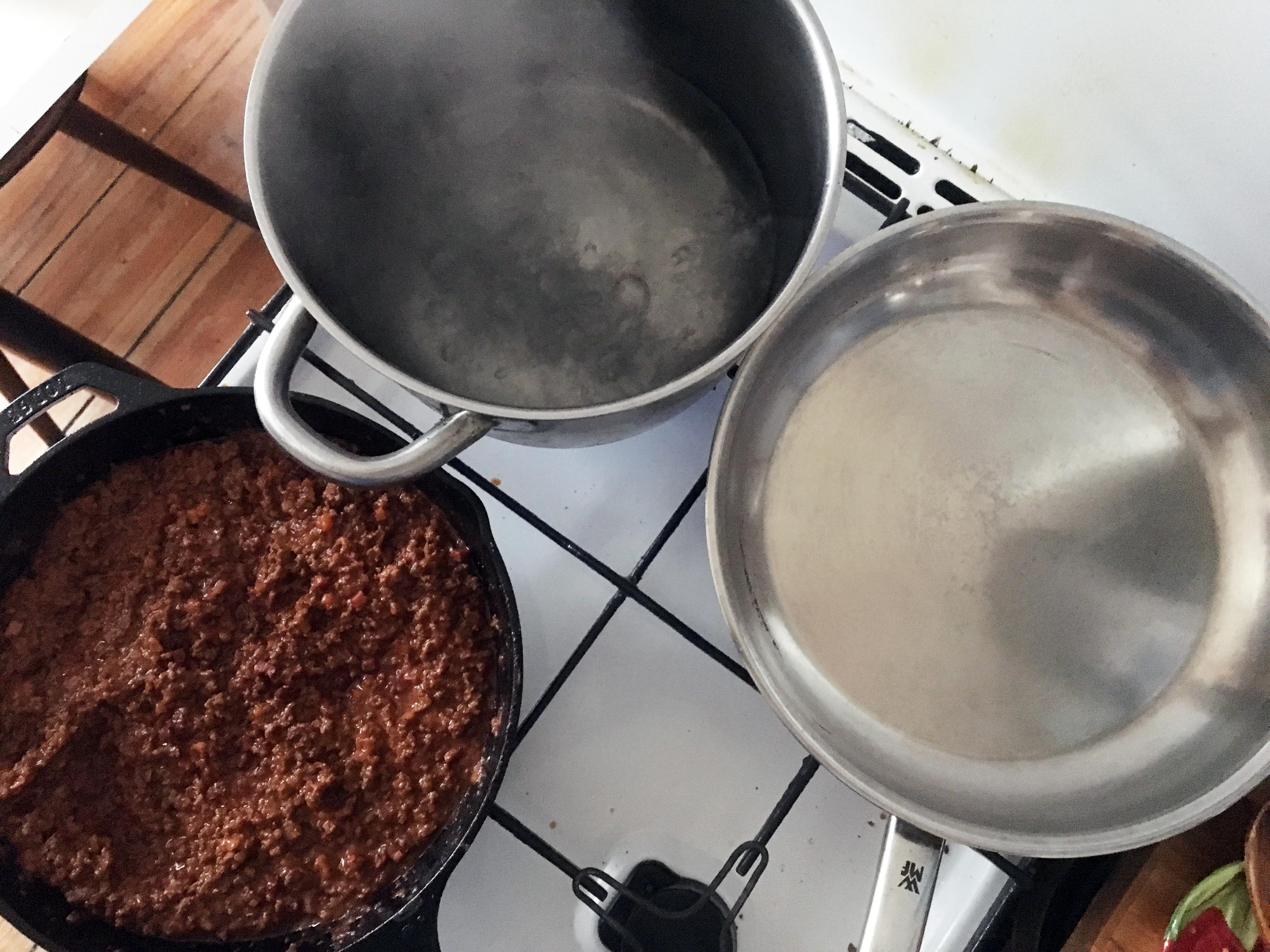
Now that your Bolognese is ready, it’s time to put all of this together. I bought fresh tagliatelle. Always use tagliatelle unless you want a true Italian to yell at you. Also, always use fresh pasta, folks. You can easily buy it in most supermarkets. Or, better yet, buy a pasta roller and make it yourself.
I set up a saucepan and a large pot with boiling water on my stovetop. Now, in a restaurant in Bologna, that pasta water would be taking orders of fresh pasta all day, thereby seasoning that water to great depths. We’re only cooking about four ounces of pasta here, enough for two servings — so, generously salt that water.

Once the water is up to a brisk boil and the saucepan is heated to a medium-low heat, you’re ready to assemble. Drop the fresh pasta into the water and move around with a pair of tongs. Add a large scoop of Bolognese to the saucepan at the same time. After about one minute, move the pasta around a bit more in the pot. After another minute, start moving the pasta from the boiling water to the saucepan. You don’t want to drain the pasta in a colander here. You want to bring that little bit of pasta water with you into the pan.
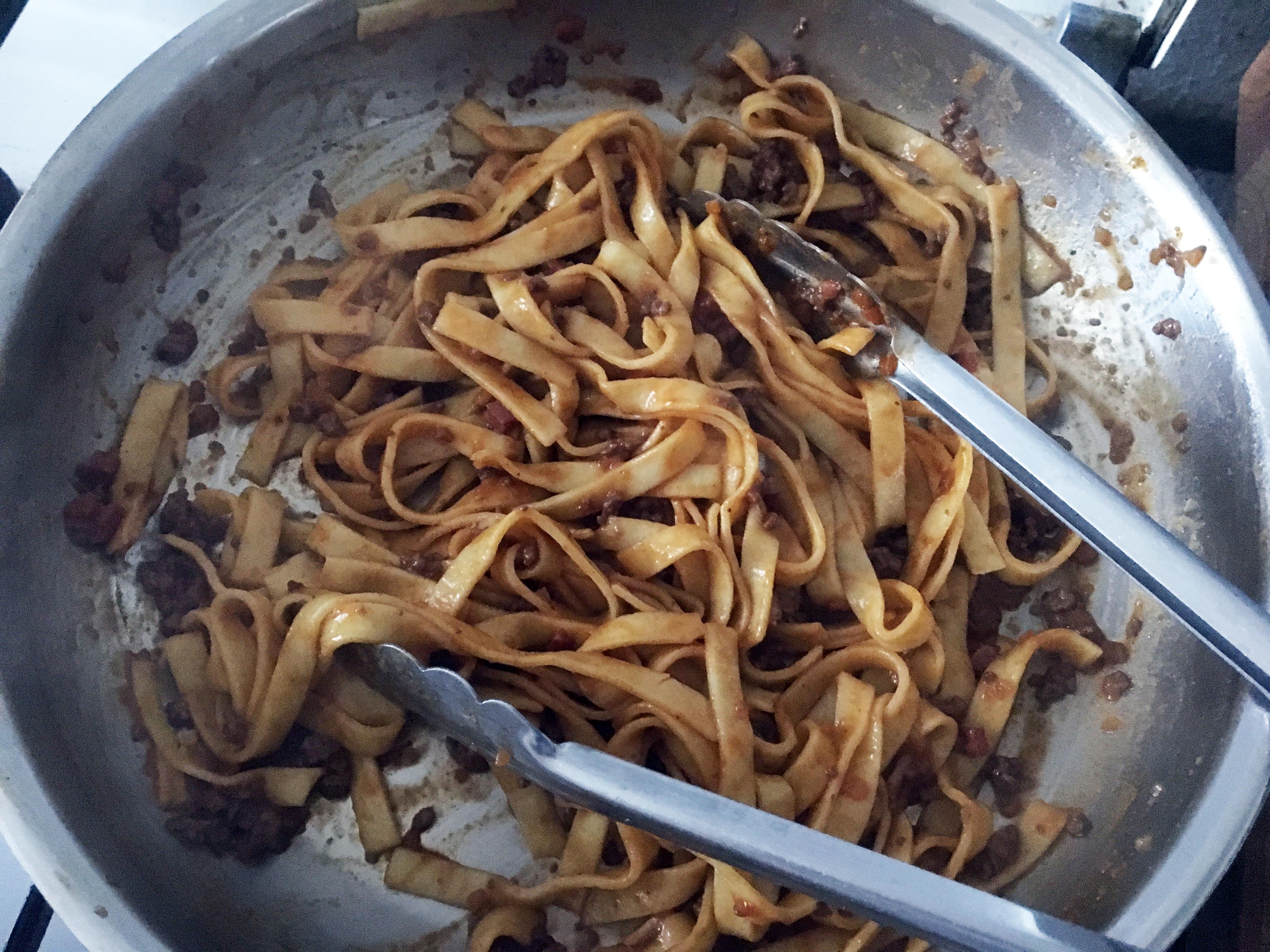
Once all the pasta is in the pan, start moving it around in circular motions until it is well sauced. You can also give the pasta a few tosses with the pan if you have those skills. This shouldn’t take more than a minute. Take the pan off the heat and get ready to plate.
I pull a pre-heated pasta bowl from the oven and place it on my table. I use the tongs to place the pasta in the bowl in a circular motion. Next, I give the pasta a dusting of fresh ground black pepper and Grana Padano* cheese. Yes, I’m using ground cheese here. That’s because this is exactly what you’d get served in Bologna with a bolognese.
That’s it! The firm pasta is the perfect delivery system for the deep umami and bright sauce. The vegetables have basically melted into the overall ragu, giving it a slight earthy sweetness. The tomato is smooth and subtle and the braised meat shines. What’s great about this recipe is that you don’t need a huge amount of it to be satisfied. Two or three ounces of fresh tagliatelle per serving means you can easily yield ten to 12 servings from this recipe.
*This is an Italian hard cheese with less aging and fewer restrictions on preservatives than Parmigiano-Reggiano. You could easily go with the parm unless you feel like it would be too sharp for you. -ed
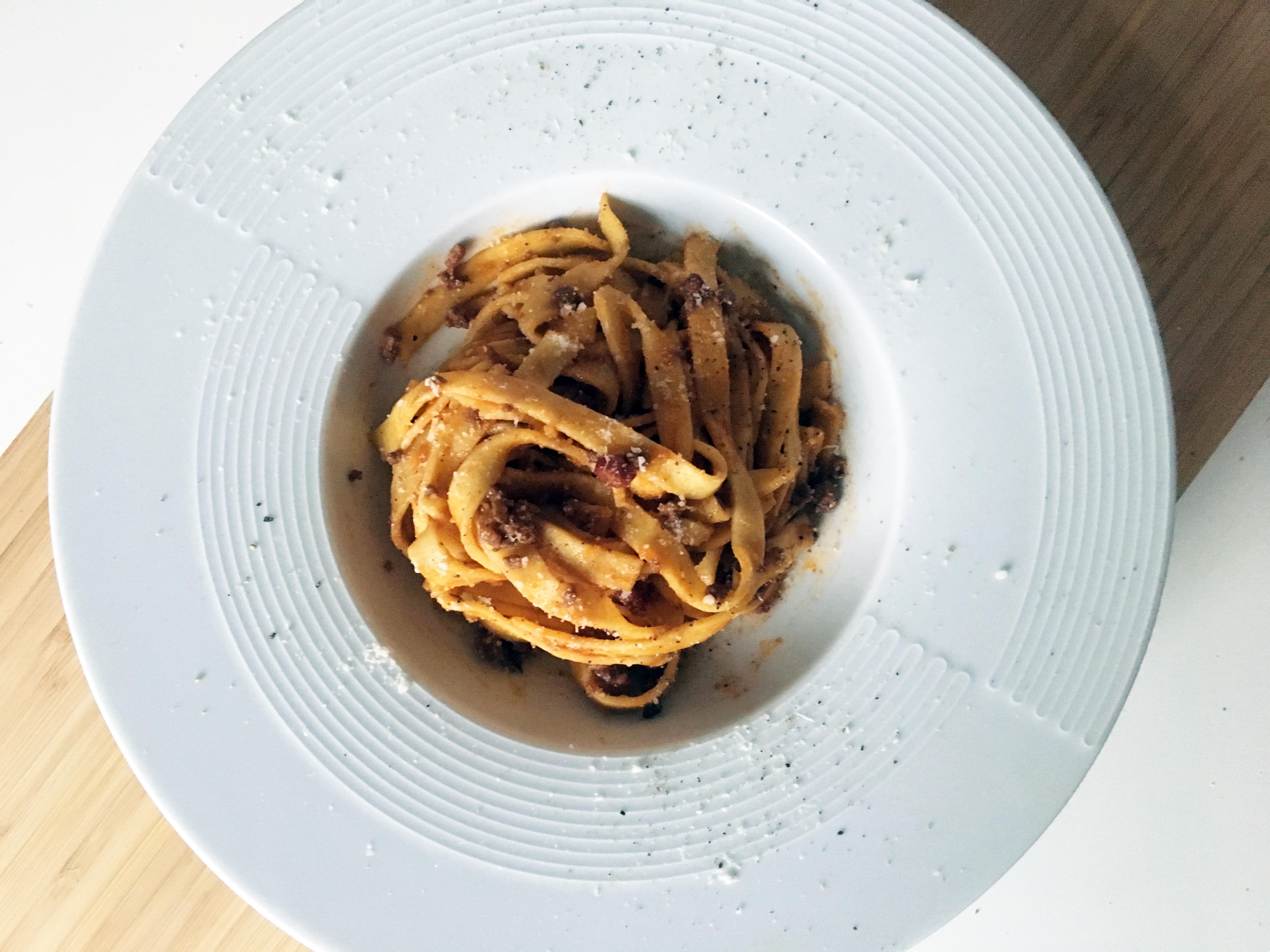
Shopping list:
- One medium Yellow Onion
- One Carrot
- One Celery stalk
- One pound Ground Beef (85/15)
- Five ounces Pancetta
- One cup Dry Red Wine
- One cup Vegetable Stock or Beef Broth
- Five ounces Concentrated Tomato Paste
- One cup Full-fat Milk
- Salt and pepper
- Grana Padano Cheese
Kitchen list:
- Cutting board
- Kitchen knife
- Wooden spoon
- Skillet or heavy-bottom pot with a lid
- Pot
- Saucepan
- Tongs






